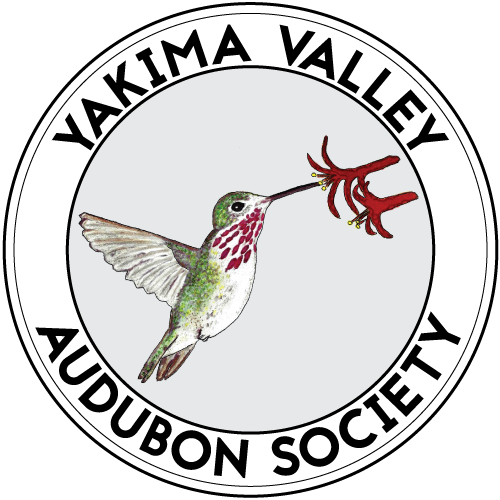Programs
Yakima Valley Audubon Society provides programs for the benefit of members and the public at the Yakima Area Arboretum. Program topics, dates and times are announced in the newsletter, Calliope Crier, and on our website.
Upcoming Programs
Thursday, December 4, 7:00 PM. Yakima Area Arboretum, 1401 Arboretum Drive, Yakima
A Year in the Life of North American Woodpeckers
Speaker: Paul Bannick
Woodpeckers are the heart of North American forests in many ways. Their distinctive drumming sounds out a familiar rhythm, while their presence supports owls and a myriad other creatures. They have evolved in ways that make them ecologically critical to forest health, serving as keystone species in a variety of wooded habitats across the continent.
In this new presentation, which accompanies the release of his new book, Woodpecker: A Year in the Life of North American Woodpeckers, Paul explores the often secret lives of woodpeckers from Alaska’s boreal forests to the oak woodlands of the West and Midwest and from the ribbon of Ponderosa Pine habitats that stretches from British Columbia through much of the Western states until they transition in southern Arizona to the Sierra Madre pine-oak that forms the spine of Mexico. Paul also explores the diversity in arid ecosystems straddling the US-Mexico border and the wet tropical habitats from Florida through the Caribbean Islands and southeastern Mexico.
Through first-hand experiences, more than 200 never-before published photographs and the latest science, Paul examines woodpeckers in every season: their courtship and nest selection in spring; life in the nest during summer; fledging and gaining independence in autumn; and the challenges of surviving the winter.
Paul also takes a closer look at the most important woodpecker habitats in North America and what we can do to protect them.
Paul Bannick is an award-winning author and photographer who makes images to inspire education and conservation. He is the author and photographer of five books including two best-selling bird books, Owl: A Year in the Lives of North American Owls and The Owl and The Woodpecker: Encounters with North America’s Most Iconic Birds.
Paul’s photography has won awards from prestigious contests, including those hosted by Audubon Magazine and the International Conservation Photography Awards. It is also featured in many bird guides, including those from Audubon, Peterson, and The Smithsonian.
Paul serves as a Director for Conservation Northwest, a Seattle based conservation non-profit. Read more about Paul’s new book, Woodpecker: A Year in the Life of North American Woodpeckers, here. Visit Paul’s website, here.
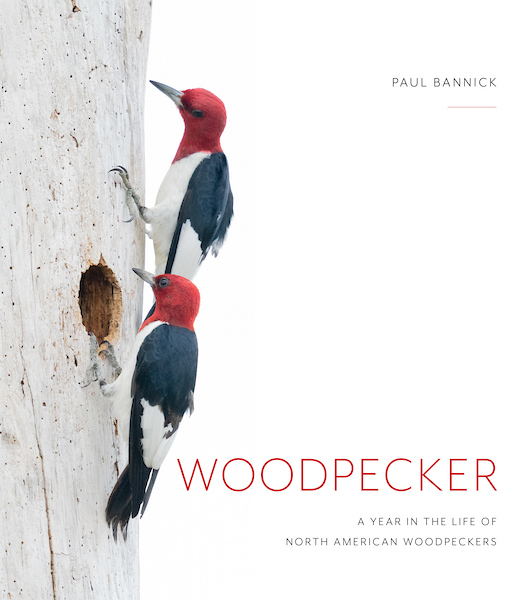
Woodpecker: A Year in the Lives of North American Woodpeckers, book cover
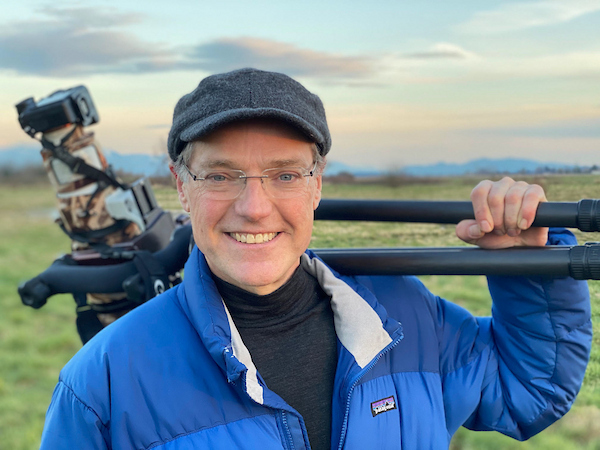
Paul Bannick

A female Pale-billed Woodpecker (Campephilus guatemalensis) greets her mate at the entrance to their nest cavity. The two look very similar except for the female’s (foreground) dark markings on her forehead. Photo: Paul Bannick.
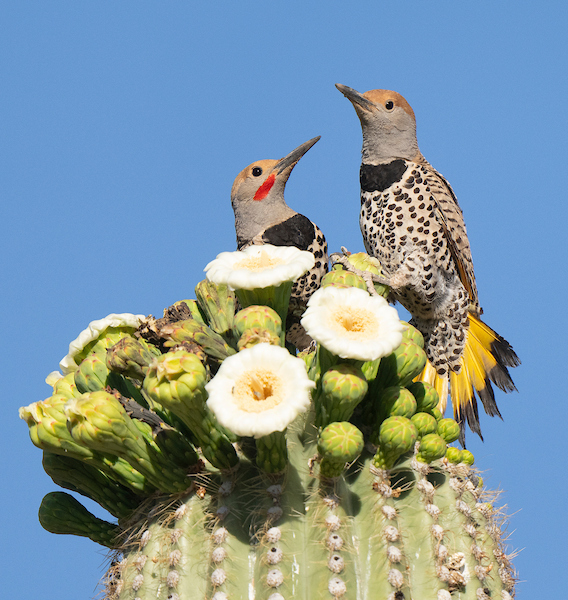
A male Gilded Flicker greets his mate as she arrives to share pollen from a Saguaro blossom. Displays of the colorful undersides of males or females are less intense after the period of courtship and establishing territories is complete. Photo: Paul Bannick.
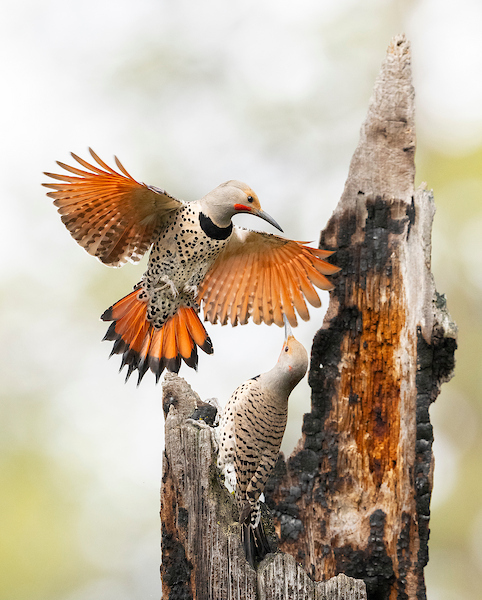
Yakima Valley Audubon Society looks forward to welcoming the following speakers in 2026:
January: David Lukas on Bird Songs
February: Scott Harris on North American Raptors
March: Jeff Kozma on the Snag Survey and his Golden-crowned Sparrow project
April: Deb Essman on Raptor Identification
May: Megan Weeber on healthy, thriving soils
Past Program
Thursday, Oct 23, 7:00 PM. Yakima Area Arboretum, 1401 Arboretum Drive, Yakima
Cascade Ridges – a southbound highway for birds in the fall.
Speaker: YVAS member Andy Stepniewski
Starting in August and ending in early November, the Cascades to the west of Yakima are a highway for migrating birds heading south. Most conspicuous are raptors who use the updrafts to aid them on their journey. Red-tailed Hawks, Sharp-shinned Hawks, and American Kestrels are three easily seen common species. But, there are 17 or so other raptors using these high elevation ridges and forests on their migration. Some are owls, so not easy to detect. In addition to raptors, a large number and variety of songbirds also are on this route, shunning the parched shrub-steppe at lower elevations and choosing, instead, the lush thickets and meadows of these mountains as their route south. These include a variety of warblers, sparrows, and other many other species.
Andy Stepniewski, who has wandered in the Cascade Mountains for nearly 50 years, is looking forward to sharing the remarkable fall migration of birds along the Cascades “highway.”
This program will be in person only and not available via Zoom.
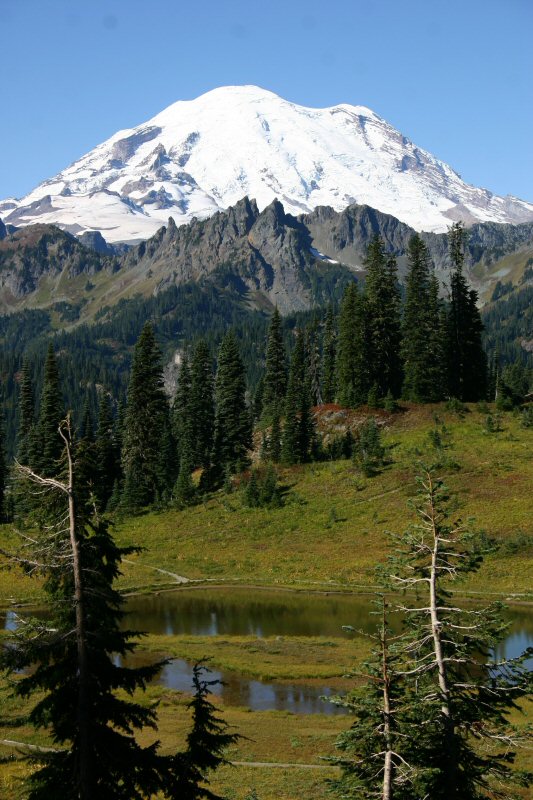
Mt. Rainier and Tipsoo Lake, photo: Ellen Stepniewski

Red-tailed Hawk, adult, photo: George Vlahakis
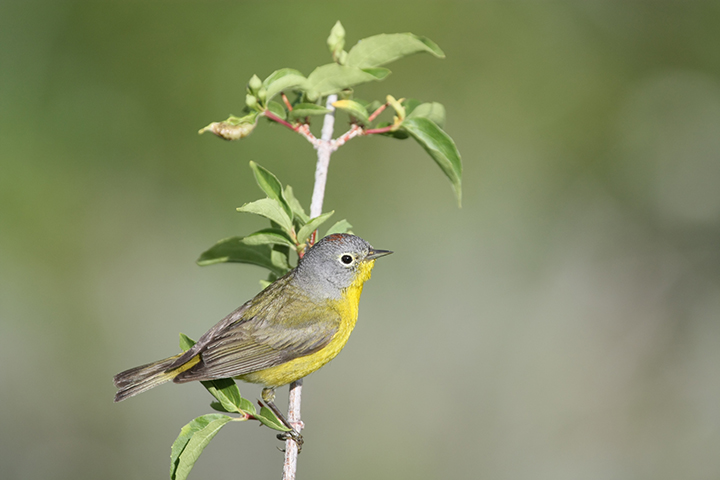
Nashville Warbler, male, photo: Ellen Stepniewski
Recorded Programs
The following programs and videos can be found here: YVAS Facebook page. At the top of the Facebook page, click on “More.” A drop down menu will appear. Click on Videos.
2025
January 23, 2025 – Exploring Madagascar’s Otherwordly Wildlife – Jason Fedorra
2024
March 28, 2024 – Whose Track is That? Exploring for Wildlife Sign – Deborah K. Essman
April 25, 2024 – Tropical Wildlife and Conservation, Peru and Kenya – Eric Heisey
2023
October 26, 2023 –Bluebird Country – Karen Zook
August 24, 2023 – Travels in Africa – Deborah Essman
May 25 , 2023 – Nutcrackers and Whitebark Pine – Taza Schaming
March 23, 2023 – Wild America 2022 – Andy Stepniewski
February 23, 2023 – Woodpeckers 2 – Denny Granstrand
January 26, 2023 – Madagascar – Eric Heisey
2022
December 8, 2022 – Forests and People – Ken Bevis
October 27, 2022 – Tahoma’s Biggest Stories – Jeff Antonelis-Lapp
September 22, 2022 – White-headed Woodpeckers – 20 years of Research in WA – Jeff Kozma
August 25 ,2022 – The Secret Life of the Deserts of the Pacific NW – Mike Denny
May 26, 2022 – Yakima Valley Audubon’s Vredenburgh Bluebird Trail Marks its 40th Year! – Andy Stepniewski
March 24, 2022 – Bird’s Eye View – Gina Roberti
February 24, 2022 – Westport Seabirds – Bill Tweit
2021
December 2, 2021 – Australia – Dennis Paulson and Netta Smith
October 28, 2021 – Special Birds of Mount Rainier – Jeff Antonelis-Lapp
September 23, 2021 – Birding Guatemala’s Highlands – Jason Fidorra
August 26, 2021 – My Woodpecker Big Year – Denny Granstrand
May 27, 2021 – Shrubsteppe Conservation – YVAS
April 22, 2021 – Condors in the Greater Northwest – Jack Nesbit
March 25, 2021 – Our Backyard Bumbles: An Introduction to Washington’s Bumblebees – David Jennings
January 28, 2021 – Cottonwood – Rivers and Reproduction – Katrina Strahmann
2020
December 3, 2020 – Charles Bergman – Every Pengiuin in the World – A Quest to See Them All
October 29, 2020 – Crows: Clever, Curious, and Charismatic with Loma Pendergraft
September 24, 2020 – Biology and Conservation of Washington Butterfliest with Dr. David James
Zoom Program Viewing Tips
You can now watch our monthly program whenever it is convenient for you! Programs are available in real time (so you can ask questions) or as recordings from a link on our website.
To view the live presentation on your laptop, tablet, or smart phone, simply click on this link https://us02web.zoom.us/j/85751241932?pwd=K0lseGlvbng4WGlKN3NaeEdaL2VTQT09 about five minutes for before the program is scheduled to begin (6:55 PM). The host will let you into the meeting shortly. If this is your first Zoom meeting, you may be asked to download the Zoom viewing app, (this does not require you to have your own Zoom account). Be sure to answer ‘yes’ to the questions about joining with video and audio so you can see and hear the presentation. For your personal privacy, your own device’s camera is automatically in the off mode when you join the meeting—please mute your microphone.
Please hold questions until the end of the presentation. You may unmute and turn on your video or use the chat function and the host will read the question for you. For Zoom issues during the meeting, please use the Chat button to alert the host.
Links to the recorded programs will be provided on the website a few days following the program.
Yakima Audubon is committed to bringing you information about our natural world. Please let us know at info@yakimaaudubon.org what you think and what we can do to improve this experience for you.
